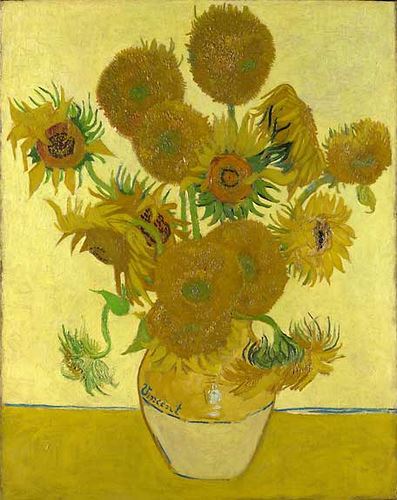Knowing what works of art hidden in painting and see their secrets through augmented reality will be easier in the medium term future. The company based in Asturias, Treelogic, leads an European project known as “Insidde” to develop a system that will display the sketches and other images hidden under the canvas.

"Van Gogh", by tonynetone, at flickr.com
Specifically designed to create a new type of scanner that uses transmitters and receivers terahertz band, a frequency that does not damage the works. The sending and receiving of the signal will be of graphene, a material first synthesized in 2004. The prototype that is generated will simplify, move more easily and more affordable scanners artworks.
The scanner will reveal the secrets that are under the canvas, other media of painting, pottery and other content of closed three-dimensional objects. The project, which will be held in three years, aims to develop graphene scanner during the first year.
In this phase the technology center Asturian Materials Technology (ITMA) will provide modified graphene bands to act as receptors and issuers terahertz frequencies. For its part, the University of Oviedo, through its area Signal Theory,will integrate these innovative materials in devices that form the scanner.
As indicated by the members in the presentation of the project, the terahertz band lies above those using mobile or satellite communications. "Begin to use is to cover a niche between the frequencies used by other existing technologies," said Treelogic researcher and coordinator of the initiative, Javier Gutierrez Meana.
In the next phase, the Delft University of Technology (Netherlands) and the Belgian company put in place “3DDynamics” image processing to generate, respectively, two-dimensional models for paintings, frescoes and the like and three-dimensional models for vessels and other objects with volume.
While end users of the technology developed as museums, Treelogic disseminate results through an augmented reality technology and made available to all Internet models generated through *Europeana network.*Click on Europeana.
The project has a total budget of 3.64 million euros (of which almost 2.9 will be provided by the EU) The head of R & D Treelogic, Sergio Garcia Caso, has estimated the economic return for the economy Asturias could amount to more than 1.3 million euros.
Treelogic addition, Insidde up the European project, the ITMA Materials Technology and the University of Oviedo. They join five other European partners: the Delft University of Technology (Netherlands), the Doerner Institut (Germany), the Istituto Nazionale di Ottica (Italy), the Regional Museum of History of Stara Zagora (Bulgaria) and the Belgian company 3DDynamics .
The project also involved the INCAR-CSIC, through the incorporation of the doctors Rosa M. Menéndez and Patricia Álvarez Rodríguez, to the Committee of Experts to advise the consortium.
I think that it is a very interesting theme.And I hope tha the results of the project are good.
Kind regards,
Luis.
Sponsored by Costaluz Lawyers.
Please click down here:
.jpg)